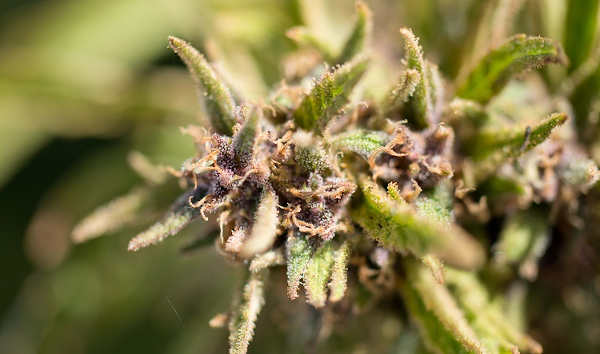
In an effort to take aggressive action to protect communities, consumers and the environment alike, Gov. Gavin Newsom has directed the creation of a new multi-agency, cross-jurisdictional taskforce of enforcement agencies designed to better coordinate agencies combatting illegal cannabis operations and transnational criminal organizations.
This new “Unified Cannabis Enforcement Taskforce,” which has been actively working since late summer, is co-chaired by the Department of Cannabis Control (DCC) and the California Department of Fish and Wildlife (CDFW) and is being coordinated by the California Governor’s Office of Emergency Services (Cal OES) through its Homeland Security Division.
The taskforce has been charged by the governor to better align state efforts and increase enforcement coordination between state, local and federal partners.
“The state of California is committed to combatting illicit commercial cannabis activity which is causing pervasive harm to California communities, the environment, consumers and legal cannabis businesses,” said Nicole Elliott, Director of DCC.
“We cannot allow harmful, illicit cannabis operations to lay waste to the environment or threaten our communities,” said Mark Ghilarducci, Director of the Cal OES and the Governor’s Homeland Security Advisor. “We are bringing together the combined law enforcement resources of our state, local and federal agencies in a coordinated enforcement action against these bad actors and criminal organizations.”
“California has an abundance of public lands set aside for conservation, recreational use and the enjoyment of the people of this state,” said CDFW Director Charlton H. Bonham. “Unfortunately, criminal organizations are impacting these areas by exploiting some of our most pristine public lands and wildlife habitats as grow sites for cannabis.”
Since its inception, the taskforce has been actively coordinating with federal, state, local and tribal agencies to disrupt this illegal market, including:
• Combatting the non-linear threat of transnational crime that extends to areas of California beyond the border and into some of most rural parts of the state.
• Establishing a new data sharing agreement which allows state and local enforcement officials to more broadly share information and cross-match data across jurisdictions.
• Leveraging and better aligning the authorities and legal provisions of federal, state and local law enforcement and regulatory agencies in conducting search warrants, indictments and maximizing arrests and prosecution of perpetrators, while also maximizing administrative, regulatory and civil penalties for bad actors.
• Disrupting human traffickers and illegal firearm and drug smugglers.
• Interdicting illegal cannabis shipments crossing California’s borders.
• Coordinating with local police chiefs, sheriffs and federal officials to deploy personnel and equipment where needed.
By investigating, removing and reclaiming illegal grow sites as well as shutting down illegal manufacturing, distribution and retail operations, and by apprehending and applying meaningful repercussions to offenders and traffickers, state, local and federal law enforcement agencies are protecting consumer and public safety, safeguarding the environment, and depriving illegal cannabis operators and transnational criminal organizations of illicit revenue that undercuts the regulated cannabis market in California.
Large scale, illicit outdoor cannabis cultivation can be harmful to the environment. Non-compliant cultivation sites can negatively affect wildlife, vegetation, water, soil, and other natural resources when they utilize chemicals, fertilizers and terracing, and even poach local wild animals. Illegal cannabis cultivation results in the chemical contamination and alteration of watersheds, diversion of natural water courses, elimination of native vegetation, wildfire hazards, poaching of wildlife and harmful disposal of garbage, non-biodegradable materials and human waste.
Untested cannabis products also pose safety hazards to consumers, while all illegal activity undercuts the regulated market and hurts licensed cannabis business owners.
In addition to the three agencies, the participating partners in the taskforce are listed below.
California Agricultural Labor Relations Board
California Business, Consumer Services and Housing Agency
California Environmental Protection Agency
California Police Chiefs Association
California State Sheriffs Association
California Highway Patrol
California National Guard
California State Transportation Agency
California Franchise Tax Board
California Department of Food and Agriculture
California Department of Forestry and Fire Protection
California Department of Justice
California Department of Parks and Recreation
California Department of Pesticide Regulation
California Department of Public Health
California Department of Tax and Fee Administration
California Department of Toxic Substances Control
California Employment Development Department
California Department of Occupational Health and Safety
California Labor and Workforce Development Agency
California Government Operations Agency
California Water Resources Control Board
High Intensity Drug Trafficking Areas program

 How to resolve AdBlock issue?
How to resolve AdBlock issue? 





